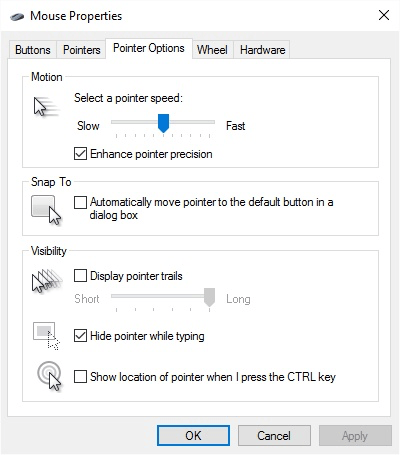The Mouse Pointer Speed is an important parameter contributing to how easily you can navigate through Windows. If you find that you must lift your mouse and take a couple of swipes to move your cursor across the desktop, the speed is probably too slow. On the other hand, if you're having trouble zeroing in on menu items or icons because the mouse moves too quickly, the speed is probably too fast.
To change the mouse pointer speed, start at the Control Panel and click Hardware and Sound. Under the "Devices and Printers" category click the Mouse link. Windows displays the Mouse Properties dialog box; you are interested in the Pointer Options tab. (See Figure 1.)

Figure 1. The Pointer Options tab of the Mouse Properties window.
Near the top of this window is a slider control in the Motion group box. Click and drag the slider to the left to slow down your pointer speed, or click and drag the slider to the right to speed up your pointer speed. The speed change occurs immediately, so if you slow it down too much you may find yourself lifting your mouse to make multiple swipes just to get to the OK button. Or if you speed it up too much you may find it more difficult to zero in on the OK button.
Once you have the mouse speed set the way you want, click OK to dismiss the dialog box.
![]()
![]()
![]() This tip (12090) applies to Windows 7, 8, and 10.
This tip (12090) applies to Windows 7, 8, and 10.
Random Hardware Addresses helps hide your computer from others tracking you on a Wi-Fi network. Turn Random Hardware ...
Discover MoreWith multiple devices used today, the way we scroll can change depending on the device. If you're used to reverse ...
Discover MoreArranging tiles into groups can make finding and starting your apps quicker. Discover how easy it is to group tiles in ...
Discover MoreThere are currently no comments for this tip. (Be the first to leave your comment—just use the simple form above!)
Copyright © 2025 Sharon Parq Associates, Inc.
Comments